La Camargue - Part 2
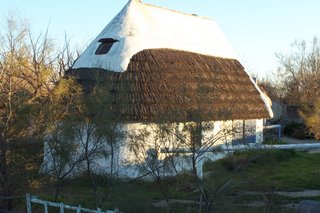
The Cabins of the Camargue
Used by farmers, fishermen, shepherds and by the “gardians” (cowboys) of the Camargue, these cabins are adapted ingeniously to the materials and climate of the region.
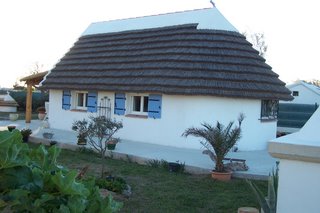
A modest house in a stone-less countryside known for:
- the ingenious construction - a good but simple plan, precisely because its cylindrical wall and roof are oriented toward the sun;
- the simple geometry of its design ( partial parallelogram, cylinder, cone, and prism are beautifully integrated)
- the harmonious proportions of a very high roof and a low wall
- the symmetry of its construction – made almost entirely of the region’s vegetation
- its unique character adapted very well to the sunny climate
- an excellent example of sound design based on function in an economically weak environment.
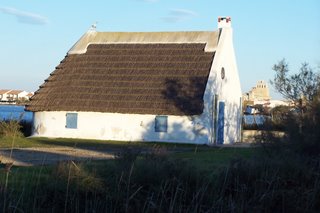
Some native French speakers are following this Blog and some of this language is quite technical so we are repeating this in French - and the rest can practice their Grade 12 French.
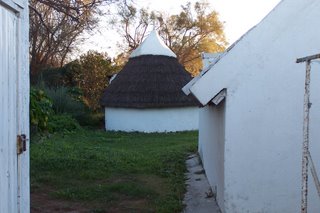
« Cest petites cabanes sont construites d’une façon fort ingénieuse. C’est déjà de l’architecture.
- Par son plan, très bon, bien que simple, et peut-être justement pour cela, avec son abside tournant le dos au mistral.
- Par son volume tout à fait de géométrie simple (parallélépipède, cylindre, cône, prisme se juxtaposant parfaitement).
- Par les proportions heureuses de ce volume pris entre une toiture très haute et un mur très bas.
- Par l’unité dans la construction presque toute végétale.
- Par son caractère fortement marqué s’adaptant très adroitement au climat et au sol.
C’est un des plus beaux exemples d’architecture puisque la cabane tire son art de la foncion pure, liée a une économie serrée. »
Extrait de R. PEPIOT, Cabanes de Camargue, rapport dactylographié, Musée National des Arts et Traditions Populaires, 1943. Document Parc Naturel Régional de Camargue.
 These cabanes des gardians are from a group of about 20. In the background is the the Church of the the two Saintes Maries with part of the Camargue in between.
These cabanes des gardians are from a group of about 20. In the background is the the Church of the the two Saintes Maries with part of the Camargue in between.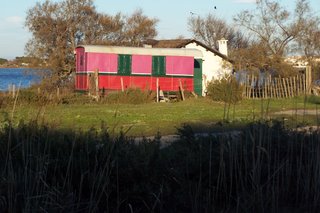
A couple of them have "traditional" gypsy caravans beside them, one in need of a bit of tender loving care.
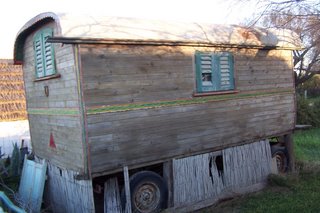
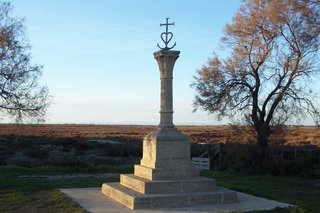
The Cross of the Gardians (Cowboys)
The cross represents faith-
The anchor represents hope
The heart represent charity.
Reminds us of that old American song from the 1950's "Have faith, hope and charity, that's the way to ..." Well anyway, it reminds Roger of it.
Doesn't really sound like the cowboys of American movies, does it?
Other Activities
The Camargue is put to many uses: 98% of the rice grown in France is cultivated here; fishing is common; and bull and horse breeding are economically viable (see previous post on the Camargue).
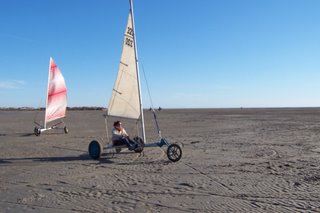
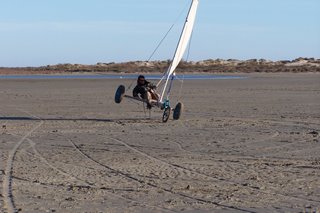
There are reliable winds for sailing and a specially constructed canal was the site for setting a windsurfing world speed record. Forty-four km of beaches provide access to the Mediterranean in a shallow water environment and the flat beaches at low tide provide a venue for land sailing.
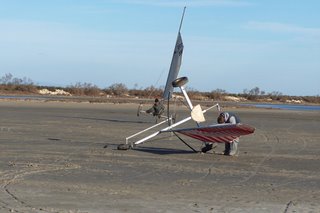
Sometimes flying a wheel results in a stop for repairs.
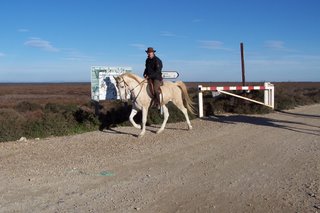
Horseback riding is seen throughout the dykes of the Camargue and on the beaches at low tide.
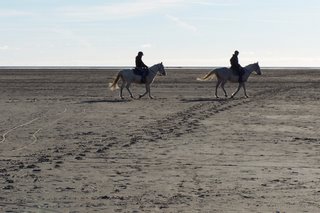
If you get lost in the Camargue, just look for the church towers, visible for about 10 km in this flat environment.
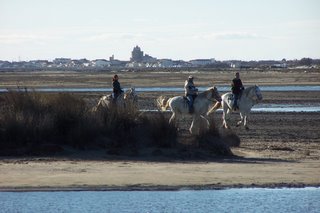
The Camargue is a truly unique and wonderful place - well worth a visit for a week or longer.
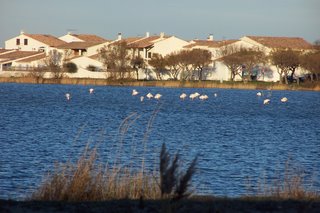
Les Saintes-Maries-de-la-Mer is the unofficial "capital" of the Camargue, a good locale from which to launch your meanderings.


<< Home